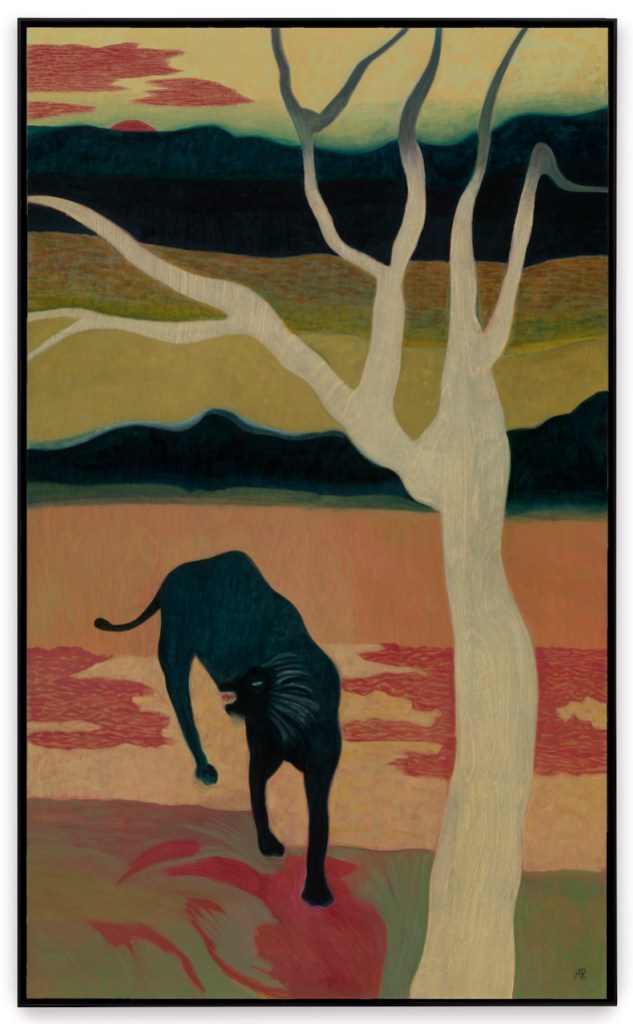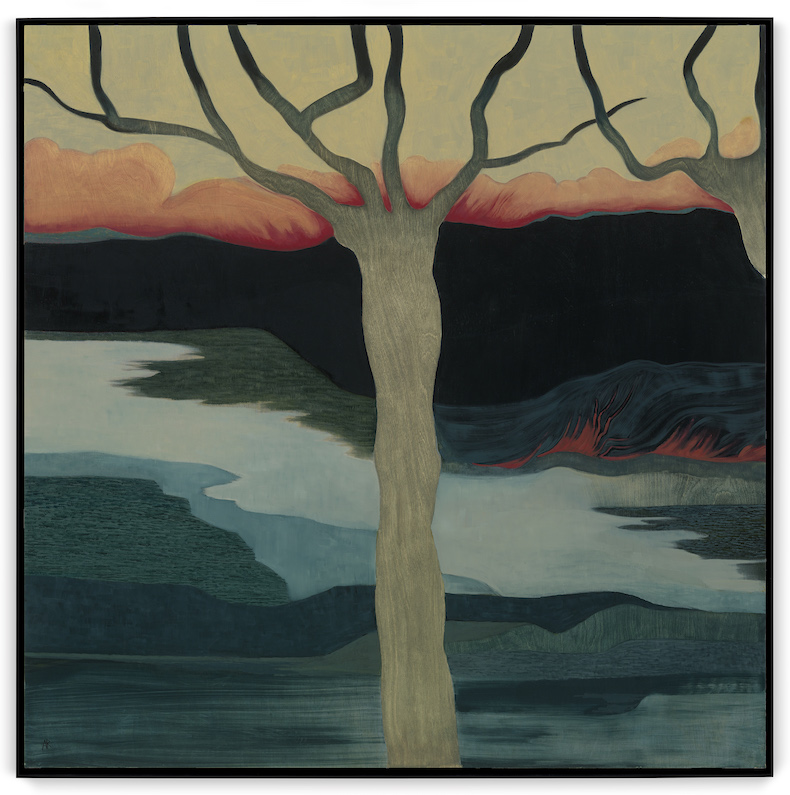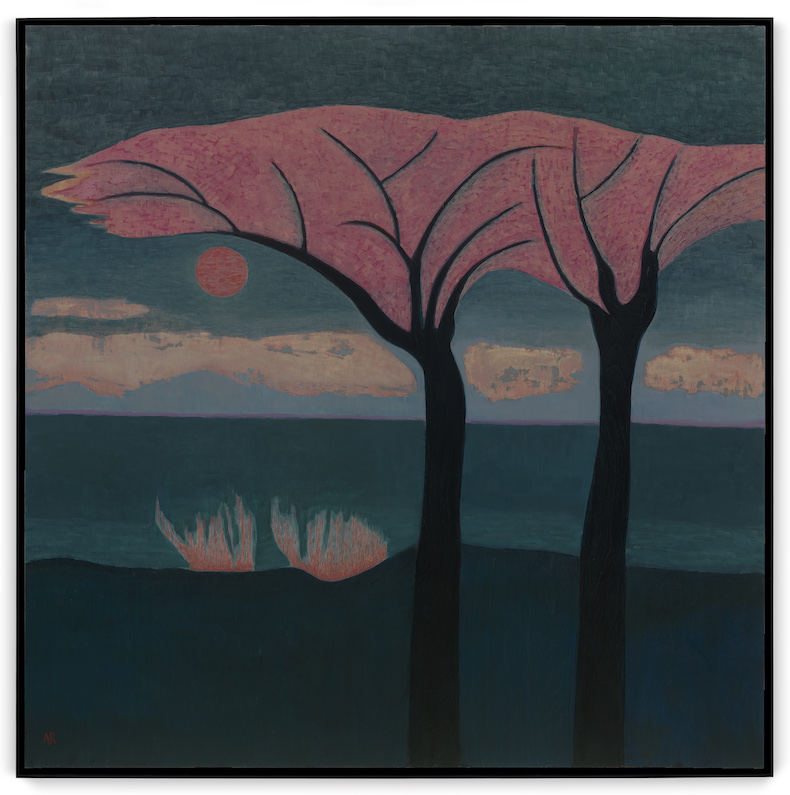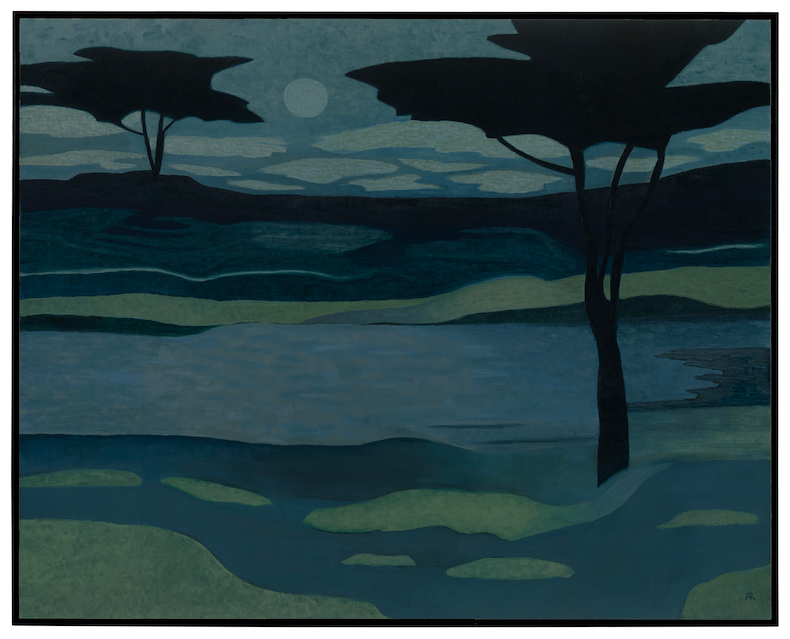Anne Rothenstein has been surrounded by art since childhood, having grown up in the Essex village of Great Bardfield, which was well known in the mid 20th century as a hub for artists – her parents Michael Rothenstein and Duffy Ayers among them. After working as an actress for a decade, the self-taught artist began painting in her mid thirties. She has since developed a unique style, rendering dreamlike scenes drawn from found images, personal photographs and memories in thin washes of paint. A number of these works will be presented in the ‘Studio’ section of Frieze Masters (15–19 October). Rothenstein is one of six artists featured in the tightly curated display, which includes recent and older works by a single artist, as well as ephemera taken directly from their place of work.

Where is your studio?
My studio is in London, in my home in Notting Hill Gate. It’s just an ex-bedroom. Working in a domestic space is tricky: dust can get into the painting, sometimes I can hear the washing machine going off. When I look at other people’s studios, they look like palaces! But I am happy where I am.
How would you describe the atmosphere in your studio?
It’s less so now, but it used to be unbelievably chaotic. I don’t think I’d cleaned it or had a visitor for years. The atmosphere depends on my mood. If my mood is bad or the work is going badly, it’s horrendous chaos; when my mood is good or the work is going well, it’s wonderful chaos!
Is there anything you don’t like about your studio?
In an ideal world I would have knocked down the wall, as there’s another bedroom next to my studio. So in some ways I would say my studio is too small, which adds to the chaos, but in another way I quite like that, as I don’t do vast paintings.

What does your studio routine look like?
I work every day, whether it’s the weekend or not. I did have a very strict routine of going for a walk, getting all my shopping and emails done and out of the way, but lately there’s been a lot more work to do. I don’t like the feeling that I’ve got something to do later in the day, so I try to make all appointments before 11am, but for the past six months I’ve been going straight into the studio at 9am. I have a sleep at around 3pm; I can’t paint in artificial light, so I stop around then in the winter. In the summer I work until around 6pm.
Do you work with anyone in your studio?
No, never: I can hardly work in it! I live on my own now and I can barely paint if there’s someone in the house – it’s completely solitary for me. I don’t know how portrait painters work when they have someone else sitting there. Loud music is all I need.
What do you listen to while you work?
I used to listen to podcasts but recently I’ve been listening to country music. I can listen to Bob Dylan forever; if I’m stuck, sometimes music can annoy me, but Dylan never could. But I do have music on the whole time. Living in a London unit, I pick up noises from outside, so having music on is a wonderful way of shutting out the world.

Do you have many visitors?
When I was with a smaller gallery, I don’t think I had any visitors in my studio for about 12 years. I’ve had to get used to it more recently, but I really have to get into a world of my own in order to paint, so other people coming in can be very disturbing. I don’t think even my children used to come into my studio; not that I wouldn’t have let them, but it became known as a rather private space.
I’ve had a few other painters visit, but people coming into my studio feels a bit like they’re reading my diary.
You grew up in Great Bardfield, among a tight-knit community of artists. How did that milieu influence you, or shape the way that you work?
Both my parents and my grandfather were artists. For me, it’s as if there has never been any other way of living. As I get older I see that my father has influenced me more than I thought: he made woodcut prints, and I paint on wood, so I’m aware of how wood is something that obsessed him and obsesses me. I’m more influenced by my mother in terms of getting down to painting again. I had a long period where I didn’t paint, and I started again when I was around 35.
I don’t terribly identify with the Bardfield group, as it has its own clear identity. A lot of the children of the other artists have gone on to play a much bigger part in the Fry Art Gallery, which represents Essex artists, but I do notice influences from afar. Growing up, art was the most natural thing in the world to do. I come at it like an artist with no training, an outsider artist. I work from instinct, and my instinct goes back all those generations. We never really talked about art, I never went to museums or galleries: art was simply the way we lived.
Tell me about your presentation in Frieze’s ‘Studio’ section.
I think the idea of the ‘Studio’ section is very interesting. The curator, Sheena Wagstaff, has included ephemera from my studio, whether it’s my pin board or an object, and I think it’s a rather brilliant idea, putting an artist’s work alongside the things that matter to them or that have influenced them. It’s exciting, at my age, to suddenly have this extraordinary new life opening: my friends are going in for knee operations while I’m going to Frieze.

What is the most unusual object in your studio?
My studio used to be covered wall to wall with books and objects: I still keep one corner like that, because I’m a collector. I live right near Portobello Road and I used to have a stall years ago. I love mysterious objects – I’m a magpie. I have lots of my children’s drawings, because I love the untrained eye.
What is your most well-thumbed book?
If I’m reading, I go back endlessly to Patricia Highsmith and her diaries, which are full of all sorts of sin. But my most well-thumbed book would be my Nan Goldin catalogue.
As told to Lucy Waterson.
Works by Anne Rothenstein are on display at Frieze Masters, Regent’s Park, from 15–19 October, presented by Stephen Friedman Gallery at booth C11 in the ‘Studio’ section of the fair.
